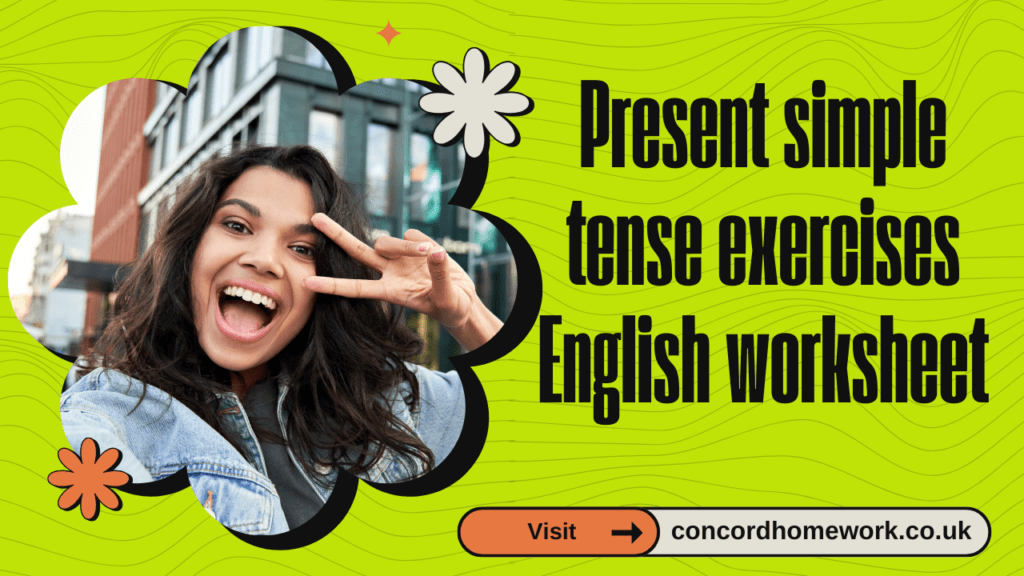Put the verbs in brackets into the present simple.
Write questions and negations, as in the example.
Put the adverb of frequency in the correct place, as in the example.
Make true sentences about yourself using the adverbs of frequency below.
This worksheet is about practicing the present simple tense. Students do the exercises and answer. The worksheet has an answer key.
* Download This English Worksheet: “Present simple tense exercises English worksheet”.
Mastering the Simple Present Tense: A Comprehensive Guide
Let’s discuss the use of the simple present tense. This fundamental verb tense is essential for expressing habits, facts, and regular actions. Let’s explore it in detail:
1. Simple Present Tense Basics
The simple present tense describes actions that happen regularly, facts, and unchanging situations. It is formed using the base form of the verb (the infinitive) with slight modifications for the third person singular (he/she/it). Here’s a breakdown:
| Subject | Verb (Base Form) | Example Sentence |
|---|---|---|
| I/We/You/They | Work | “I work in London.” |
| He/She/It | Works | “She works in London.” |
2. Usage of the Simple Present Tense
A. Expressing Habits and Routine Actions
- Habits: Describe actions that occur regularly or repeatedly.
- Example: “I play tennis every weekend.”
- Routine Actions: Refer to activities that are part of our daily life.
- Example: “She reads a book before bedtime.”
B. Stating Facts and General Truths
- Facts: Present information that is universally true.
- Example: “The earth circles the sun.”
- General Truths: Express scientific facts or principles.
- Example: “Light travels at almost 300,000 kilometers per second.”
C. Talking About Scheduled Events
- Use the simple present tense to discuss fixed future events.
- Example: “The school term starts next week.”
3. How Beginners Can Use It in Daily Life
Here are practical examples of how beginners can incorporate the simple present tense into their daily conversations:
- Introducing Yourself:
- “My name is John. I come from New York. I live in an apartment.”
- Talking About Hobbies:
- “I play the guitar. She paints beautiful landscapes.”
- Describing Your Routine:
- “I wake up at 7 a.m. every day. I have breakfast and then go to work.”
- Expressing Preferences:
- “I like coffee, but I don’t like tea.”
- Discussing General Knowledge:
- “The sun rises in the east.”
Remember to use the third person singular form (with an -s) when referring to someone else (e.g., “She works”). With practice, beginners can confidently wield the simple present tense in their daily interactions! 📚🎓
What topics do you need?
“Thank you for taking the time to explore this topic with us! We hope you found the information helpful and insightful. Have any thoughts, questions, or additional examples to share? We’d love to hear from you in the comments below!
Don’t forget to spread the word by sharing this blog with your friends, family, and colleagues. Together, let’s continue to learn, grow, and connect with the world around us. Happy reading and sharing!”

